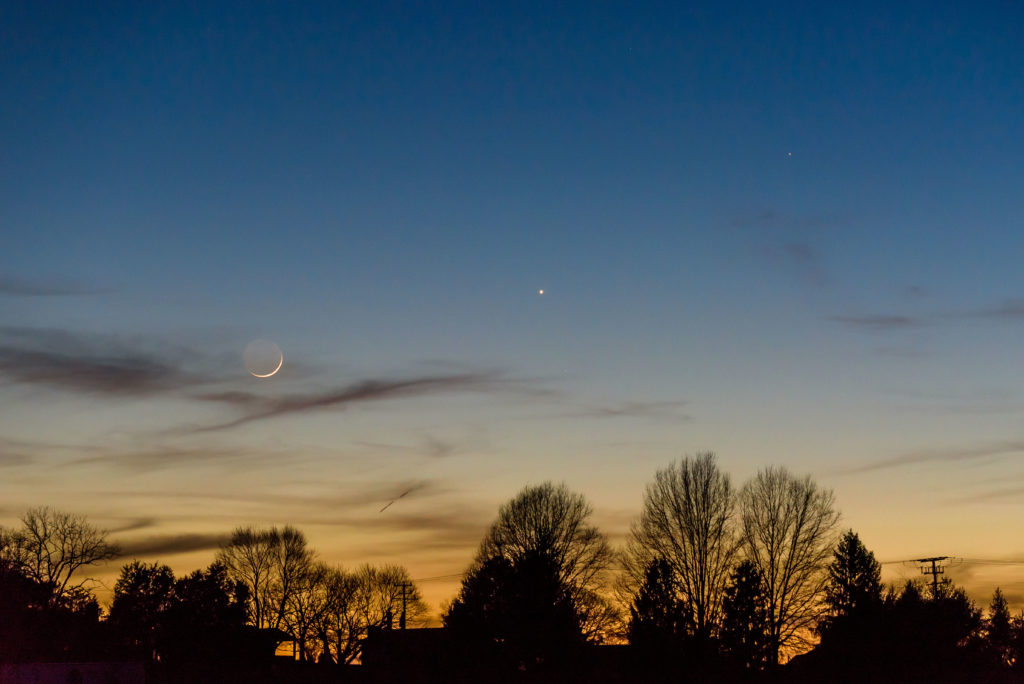
After a cloudy night, the sky cleared as dawn arrived on a late summer morning as seen from Bruneau Dunes State Park in southern Idaho on September 8, 2018. Here you see a very slender waning crescent Moon to the upper left of the star Regulus. Mercury is at the lower middle of this image, just above the clouds. Just minutes earlier, the constellation Orion tried to peak through the early-morning clouds (see below) [Read more…] about Dawn Sky – Crescent Moon, Mercury, Regulus, and Orion
Share This: The last Sunday of northern winter in 2018 brought a clear and dry night for stargazing in the Washington, D.C. area. In this image, taken from The Plains, Virginia, shows a slender crescent Moon just 3% illuminated by the Sun’s light. The Moon is joined by the two inner planets Venus (brighter, at center) and Mercury (upper right). Mercury has just passed its greatest eastern elongation and will now begin quickly moving back toward the Sun. Venus moves in the opposite direction, more languorously, as it slowly gets higher and brighter in the coming weeks.
The last Sunday of northern winter in 2018 brought a clear and dry night for stargazing in the Washington, D.C. area. In this image, taken from The Plains, Virginia, shows a slender crescent Moon just 3% illuminated by the Sun’s light. The Moon is joined by the two inner planets Venus (brighter, at center) and Mercury (upper right). Mercury has just passed its greatest eastern elongation and will now begin quickly moving back toward the Sun. Venus moves in the opposite direction, more languorously, as it slowly gets higher and brighter in the coming weeks.

